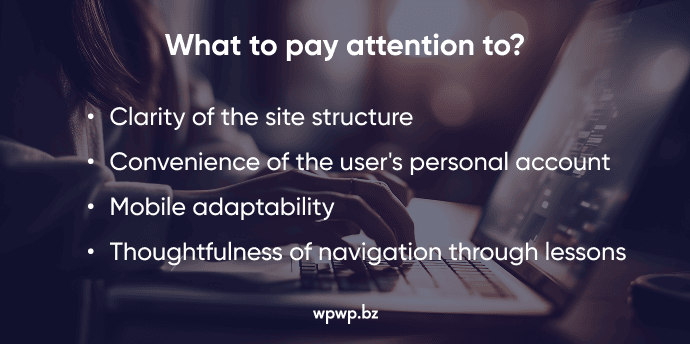
The demand for online courses in 2025 is growing rapidly. This is explained by the fact that in the modern rhythm of life it is difficult to find time to attend classes in training centers. That is why businesses in the field of education are developing, and sites that offer online courses are quickly finding visitors. WordPress is one of the most convenient platforms for creating such web resources. Let’s consider how to create a website for online courses on this CMS.

Why choose WP?
WordPress is a flexible platform for e-learning websites. It is worth choosing this CMS as a basis for the following reasons:
- a wide database of plugins provides high functionality;
- a high level of security, user data will be maximally protected;
- integration with various programs and systems;
- the ability to implement various payment methods;
- implementation of any design, a high level of customization.
In addition, you do not need to pay extra for using WordPress for education, which is important if you are just starting to do business.
Building a website based on plugins: Popular options
How to create an e-learning platform? The easiest option is with the help of the best LMS plugins WordPress. The functionality of the web resource depends on them. Let’s consider the most popular options in more detail.
LearnDash
Why should you choose this plugin?
- Multi-level course structure. This ensures a logical and consistent presentation of the material, as courses can be divided into modules, lessons and separate quizzes.
- Tracking student progress. This plugin offers access to the next material after passing the test, automatic completion of lessons, certificates after the course, etc.
- Monetization options. You can integrate PayPal, WooCommerce, Stripe to sell courses in a format convenient for you.

MemberPress
This plugin is designed to manage subscriptions and create closed communities. Reasons to build LMS website on WordPress using MemberPress:
- Limited access to content. You can create a closed learning platform and close content for certain groups of users.
- Flexible access management. In the admin panel, you can configure access depending on the type of subscription, membership level, etc.
- Convenient management of paid access. Thanks to Stripe and PayPal integrations, it is easy to manage paid access to educational content.
What other plugins for WordPress courses are popular?
- Tutor LMS — a convenient interface, support for front-end course editing, integration with popular payment systems.
- LifterLMS — a multifunctional system with cool features for monetization and integration with CRM.
- WP Courseware — an easy-to-use plugin for creating courses using the drag-and-drop method, ideal for a quick start.
UX and design: what is important for an e-learning platform
There are basic “rules” of design and UX that must be followed to make the site user-friendly. If you decide to build an online learning platform WordPress, pay attention to the following points:
- Clear structure. How clear is your site for a person who opens it for the first time? We recommend reviewing the design from a UX perspective.
- Personal user account. It should contain all the information about the course, subscription, current plan, etc. The account interface is simple and concise.
- Mobile adaptability. Keep in mind that visitors can access the site from phones and tablets. The site should be mobile responsive, this is important not only for the convenience of users, but also for the site’s ranking in Google.
In addition, think about convenient navigation through the lessons before creating a WordPress e-learning site. We recommend dividing them by topics and modules.

Payment and marketing: What else is important for e-learning sites
It is important that transactions are secure and users receive a receipt for payment. We recommend implementing Stripe, PayPal, WooCommerce integrations for convenient user billing. In addition, you can implement payment with gift certificates or implement one-time courses.
Don’t forget about plugins for tracking analytics. They are necessary for tracking the site’s performance. We recommend installing the following tools:
- Mailchimp for email marketing, newsletters;
- Yoast SEO and SEO plugins for optimizing your site for search engines;
- Hotjar for user behavior analytics.
Summary: How to quickly get a website for online courses
First, it is important to first determine the functionality of the future site. Sometimes ready-made plugins will be enough to implement it, but sometimes custom solutions will be needed. Secondly, you need to choose a specialist who will implement your project. For a quick website development, it is better to contact the development team. WPWP is a company of specialists with many years of experience who can easily create a website for WordPress online courses. Contact us now and get a free consultation and course website development from professionals!


